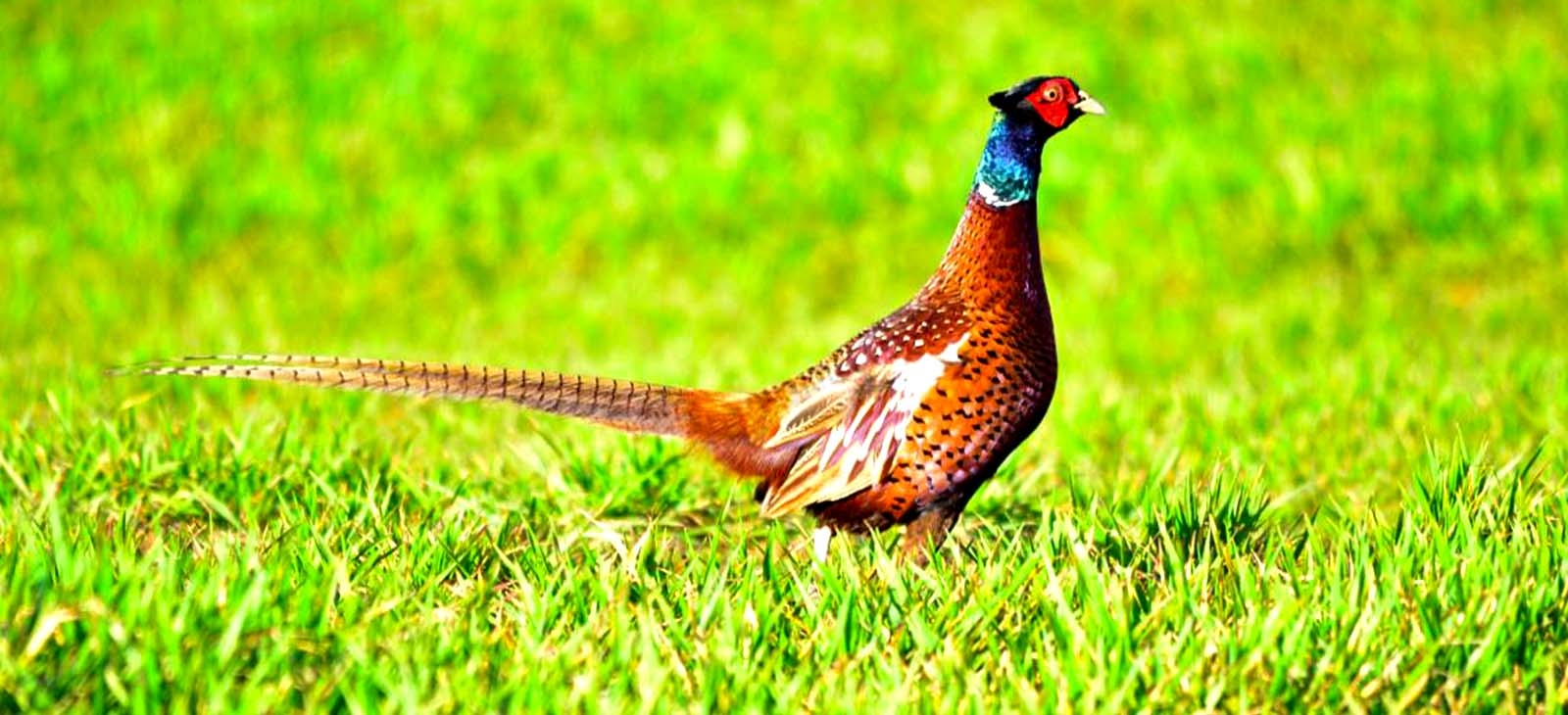The common pheasant (Phasianus colchicus), is a bird in the pheasantfamily (Phasianidae). It is native to Asia and has been widely introduced elsewhere as a game bird. In parts of its range, namely in places where none of its relatives occur such as in Europe (where it is naturalized), it is simply known as the "pheasant". Ring-necked pheasant is both the name used for the species as a whole in North America and also the collective name for a number of subspecies and their intergrades which have white neck rings.
The common pheasant (Phasianus colchicus), is a bird in the pheasantfamily (Phasianidae). It is native to Asia and has been widely introduced elsewhere as a game bird. In parts of its range, namely in places where none of its relatives occur such as in Europe (where it is naturalized), it is simply known as the "pheasant". Ring-necked pheasant is both the name used for the species as a whole in North America and also the collective name for a number of subspecies and their intergrades which have white neck rings.
The word pheasant is derived from the ancient town of Phasis, the predecessor of the modern port city of Poti in Western Georgia. It is a well-known gamebird, among those of more than regional importance perhaps the most widespread and ancient one in the whole world. The common pheasant is one of the world's most hunted birds; it has been introduced for that purpose to many regions, and is also common on game farms where it is commercially bred. Ring-necked pheasants in particular are commonly bred and were introduced to many parts of the world; the game farm stock, though no distinct breeds have been developed yet, can be considered semi-domesticated. The ring-necked pheasant is the state bird of South Dakota, one of only three U.S. state birds that is not a species native to the United States.
The green pheasant (P. versicolor) of Japan is sometimes considered a subspecies of the common pheasant. Though the species produce fertilehybrids wherever they coexist, this is simply a typical feature among fowl (Galloanseres), in which postzygotic isolating mechanisms are slight compared to most other birds. The species apparently have somewhat different ecological requirements and at least in its typical habitat, the green pheasant outcompetes the common pheasant. The introduction of the latter to Japan has therefore largely failed.

